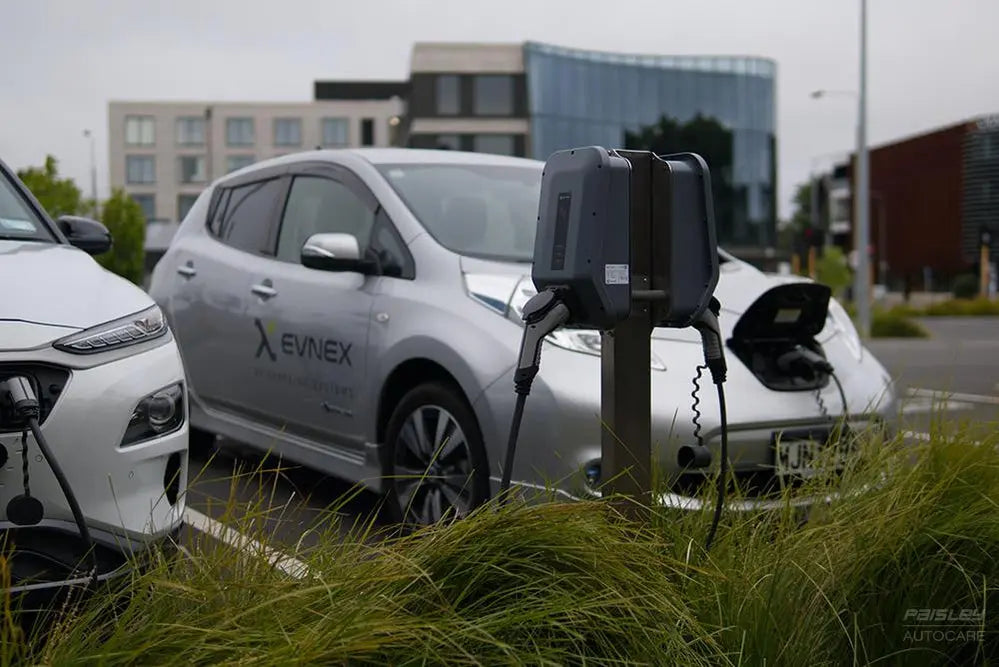5 Things to Know Before Buying an Electric Car
With new laws put in place to finally cut off production of new petrol, diesel and hybrid cars by 2035, the switch to all-electric has become very real. If you’re on the cusp of buying a new car right now, this could well be the last time you own or drive a conventional combustion-engine car.
Whether you’re planning on making the switch now, or waiting a few years, there are several important things to think about and understand first.
- Bigger Sticker Price; Lower Running Costs

You may have heard that electric cars are more expensive to buy at the moment. It’s true, but they are also cheaper to run over a year than a petrol car. That may surprise you since the idea of “plugging in” your car sounds like a monstrous expense added to your electricity bill.
Figures shared by the Energy Savings Trust point to the fact that while charging your EV at home will cost up to £6 for 100 miles of range, the equivalent amount of petrol or diesel would be £13-16. That a cut in costs of over 65 percent. Apply that across your whole year and your electric car starts to look like a pretty savvy investment. As the prices begin to tumble with increasing availability and more efficient production techniques, those savings get sweeter and sweeter.
- Range, Range, Range

While it’s true that early electric models and hybrid models have failed to deliver a viable alternative to the combustion engine, that’s changing fast. Hybrids, for instance, were only useful to city dwellers who benefited from short-range electric driving in heavy traffic and petrol driving at distance. New electric models dwarf the range of their predecessors.
Take the Tesla Model S, for instance, which currently offers a single-charge range of 379 miles. That’s about the road distance from London to Edinburgh. Other makes and models are also now reaching the 300-mile range --- the Hyundai Kona Electric and Kia e-Niro for example. The available range is a crucial consideration before you make the switch. Range is bound to continue improving, but we must consider the distances we travel and how far our car can go.
- Home Charging Setup

Following on nicely from the question range is that of charging. To restore your car’s range, you’ll need a charging solution. You might think that your home doesn’t have one, but in fact you can use the factory-issued charging cable to plug your car directly into the nearest available mains outlet. While this is the simplest solution, you may want to look into a faster alternative.
While using the mains is possible, it’s not a good choice for anything other than a small hatchback EV. The Honda e, for instance, might charge overnight from the mains socket. A larger SUV model, on the other hand, needs something bigger like a wall box solution. You can install one in your drive or garage for anywhere from £200-500 depending on size, brand and power rating. Once you have it, you can charge using, say, a 7kW output which can manage charging around 3 times faster than the mains socket. How often you take the car out and how much of the battery you’ll drain each day will dictate your considerations on charging at home.
- Public Charging Near You

While the majority of your EV charging will be done at home, you’ll still need to look into public options for when needs arise. If you’re on a family holiday in Cornwall or the remote Highlands of Scotland, you’ll have to be confident you can make it to your destination. You’ll also have to be able to charge somewhere once you’re there.
Despite the common belief that public charging infrastructure in the UK is woefully behind, it is actually developing and rolling out fast. Back when EVs only accounted for 1 percent or less of all cars, it was easy to see why charging points were few. Now, however, they account for 5 percent, with much of that increase coming in the last 2-3 years. It will grow very quickly as the combustion-engine deadline approaches. Right now, there are around 500 new charging points being added around the country each month.
Ensure you have good options within your driving range before making that big switch.
- Green Credentials

One final thing to think about is how green your preferred electric car and the charging solution really are. It’s not much use saying electric cars will help the planet if we’re going to burn billions of tonnes more fossil fuels to make them go. Some of the materials in the battery are also somewhat questionable, like lithium and cobalt. The good news is that in order to meet green targets, as well as reduce overall costs, electric car makers are investing heavily in clean, efficient technologies on every level to produce these vehicles.
If you wan to know which are the cleanest, however, then consider their overall range, charging efficiency, power loss efficiency (e.g. do they lose more power in cold weather), and production materials. Many charge point providers are also now offering guarantees that the energy you’re using to charge the car is green. In any case, avail yourself of the salient facts.
Electric Cars Will Soon Be the New Normal

How fast it really happens among the population is a question that’s impossible to determine right now. What we do know, however, is that saving some spectacular political U-turn, the end of the age of combustion engines in the UK is in sight. Already some auto makers are giving up on new diesel models as sales have continued to dwindle in recent years. There are challenges to overcome, but at some point we are all of us going to have to decide when we make the big switch. Timing will be important so that we can take advantage of various price points and incentives, but we should also at least verse ourselves in the important facts of EV ownership.




